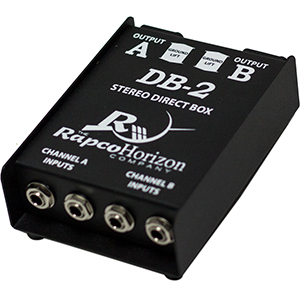
GigaStudio 3 Virtual Sampling Workstation
Item # 21760
Retail Price
$599
Sale Price!
$495.00
Buy Today and Save $104.00 (17% from Retail)
We're sorry, this product is no longer available.
GigaStudio 3 is the much anticpated new version of the best and most powerful sampler. Available in three versions, ORCHESTRA, ENSEMBLE, and SOLO, GigaStudio 3 offers up to unlimited polyphony, 96kHz/24-bit sample support, ReWire support, VST hosting, realtime convolution modeling and a new look and feel for improved usability and workflow. Naturally, it retains the features that made GigaStudio the professional choice for sampling, such as disk streaming, the lowest latency of any sampler and the best sound libraries in the world.
GigaStudio 3.0 is a stand-alone Windows application that uses hard disk streaming to create the most realistic sampled instruments ever created. It offers access to the finest sound libraries ever assembled, from extensive orchestral collections, detailed piano samples, rich basses, rare keyboards and much more.
GigaStudio can load sample files up to 4.3 gigabytes in length. The first few milliseconds of each sample are loaded into RAM for instant playback, then the rest of the sample streams off of the hard drive. This gives you access to big, dynamic samples without needing tons of RAM into your computer.
But what does it mean to have gigabytes of samples? How is this better than the Piano sound in my favorite synth? Let compare the 2 gigabyte GigaPiano 2, included with the Orchestra and Ensemble editions of GigaStudio 3.0, with the 16 to 64 megabyte piano sample found in a typical synthesizer.
First, every key on the piano is sampled in GigaPiano 2. On a typical synthesizer, the piano might only sampled twice every octave, so the middle C sample may need to stretch all the way up to middle F#.
Since a piano sounds different depending on how hard you strike the key, GigaPiano 2 samples each key sixteen times at different velocities. A typical synth piano will only have one to three "crossswitches" per key, so you can usually hear the transition from the soft sample to the loud sample. Some piano sounds on synths don’t have any crossswitches, filtering and attenuating one sample to cover the entire dynamic spectrum. More crossswitches gives you a more accurate sound, and it’s also a lot more satisfying to play.
GigaPiano 2 has enough memory to record the entire decay of a piano note, even though the low bass notes may decay for 20 seconds or more. A synthesizer can’t possibly do this with just a few megabytes, so they loop the sample after only a second or so. This artificially looped sound is then attenuated using a synth filter and DCA to approximate the natural decay of a piano key, which is something GigaStudio can handle by just playing the actual recording.
Many GigaStudio libraries include different mic techniques to choose from. For example, the VintAudio Yamaha C3 library has close mic, distant mic and player’s perspective mic locations. You can load all of these samples at once and balance between them when mixing, or even output different mics to multiple outputs for a 5.1 surround mix. Obviously, this is something that’s impossible to do in a synthesizer.
Finally, samples are sometimes converted to a lower sampling rate to save on ROM space on synthesizers. Since they only have 50-100 megabytes of total sound ROM for all of the instruments they want to include, they might cut corners by sample rate converting to save space. For example, they may decide that a bass guitar or kick drum doesn’t have a lot of high end, so resampling it at 22kHz is acceptable. GigaStudio is going the complete opposite direction, with version 3 now offering up to 96kHz sampling.
Hardware samplers might be able to load a bigger sample than hardware synthesizer, maybe up to 128MB or more, but simply nothing compares to GigaStudio. We don’t mean to pick on your favorite synth, but if you haven’t played a 2GB piano library you just don’t know what you’re missing.
0 0
GigaStudio 3.0 comes in three sizes, the Orchestra version offering unlimited polyphony for full arrangements. GigaStudio 3.0 Solo has 96-voice polyphony, and GigaStudio 3.0 Ensemble plays up to 160 voices. More voices gives you the ability to layer instruments, add parts to your arrangement and approximate huge symphonic orchestras. And the efficient kernel-level processing and RAM usage in GigaStudio results in more polyphony than any other software sampler. Up to 8 banks of 16 MIDI channels can be played back for 128-part multitimbral sequencing.
Included for the first time in version 3.0 is Rewire support for routing GigaStudio into your sequencing program. This allows GigaStudio instruments to appear in your workstation software, right beside plug-in instruments and audio tracks.
GigaStudio 3.0 has a capable digital mixer built-in, with 128 channels and 32 fader groups. This allows you to submix instruments within GigaStudio so you don’t need to deal with hundreds of faders during mixdown. It includes four-band parametric EQ and compression on every channel, with a graphic display to check your settings at a glance. Each channel has 8 aux sends, which can be linked for stereo operation.
GigaStudio 3.0 now includes VST plug-in support, so you can use your favorite effects plug-ins to process sounds within the DSP Station window. Insert your favorite vintage compressor plug-in on a snare drum, a filter plug-in on a string line, tube amp distortion on a bass track - wherever your imagination takes you.GigaStudio is a Windows application that takes advantage of the power of Pentium-compatible processors. As a free-standing application, it can take advantage of Kernel-level processing power. This means that it gets to dig underneath the Windows layer and get down to the nuts-and-bolts of your computer’s CPU for more processing power. This results in more polyphony and lower latency (delay between MIDI input and sound coming out) than plug-in-based software samplers. In fact, GigaStudio has the lowest latency of any sampler, anywhere, ever.
You may be wondering how to take advantage of GigaStudio in a Mac-based studio. Most composers use a dedicated computer to run GigaStudio, dedicating all of the power of one system to running their sampling workstation. With the constantly-falling prices of PCs, you can put together a screaming system for less than the price of many rack-mount synth modules. If you look at price vs. performance, your GigaStudio computer workstation will give you much more realistic sounds than any synth module, not to mention more multitimbral parts, higher polyphony and better effects.
GigaPulse SPTM is an exciting new component of GigaStudio 3.0. GigaPulse SP employs convolution to create incredibly realistic reverb, mic modeling and instrument resonance simulation. Convolution uses an actual recording as the basis for signal processing. For example, a concert hall is recorded with a frequency sweep called an impulse. This "impulse" can then be imported into GigaPulseTM Pro (the encoding processor included with GS3 Orchestra) where our concert hall impulse can be included/encoded into a sampled instrument or .gig file. When this instrument is loaded into GS3, now embedded with convolution, on to a MIDI channel in GS3, GigaPulse SP (the convolution player included with all version of GS3) reveals itself with the concert hall impulse loaded along with your instrument samples. The result sounds like you’re playing in that hall.
TASCAM’s new GigaPulse technology takes real-time convolution to the next level. With realtime surround Acoustic Space Modeling, our proprietary technology goes far beyond any other convolution-based plug-in. Of course all of these features are included in the GigaPulse SP engine in every version of GigaStudio. The location of the performer in an acoustic space can be specifically located in the room, and the perspective of the mic can be changed for close-micing simulation. GigaPulse SP has seven unlimited microphone locations, compared to the two channels in every other convolution effects processor, which is ideal for simulating Decca-Tree mic techniques and mixing in surround.
ISY
Related Gear
-

MIDI Solutions Quadra Merge MultiVoltage
Item # 6669
Description
$134.00
4-in 2-out MultiVoltage MIDI Merger -

Rapco DB-2
Item # 10636
Description
$89.95
Stereo 2 Channel Passive Direct Box -

MIDI Solutions Merger - MultiVoltage
Item # 6668
Description
$89.95
2-in 2-out MIDI MultiVoltage Merger -

Tascam GSMastery
Item # 27844
Description
$29.00
GigaStudio Mastery Tutorial - 4-CD set multimedia guide -

8th Street Music $25 Gift Certificate
Item # g25
Description
$25.00
Gift Certificate (may be purchased in multiple amounts)
 GigaStudio 3 Virtual Sampling Workstation
MPN #:
UPC #:
Regular price: $599
$495.0000
Available from:
8th Street Music
Condition: New
Out of Stock
GigaStudio 3 Virtual Sampling Workstation
MPN #:
UPC #:
Regular price: $599
$495.0000
Available from:
8th Street Music
Condition: New
Out of Stock



